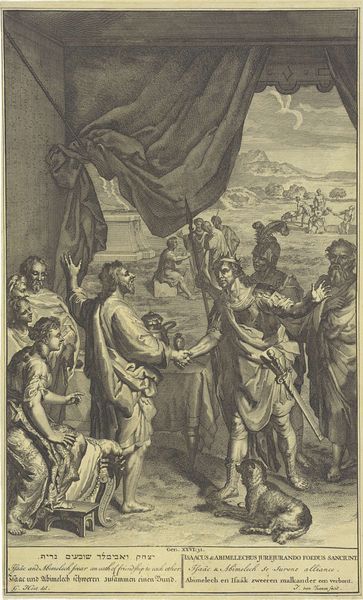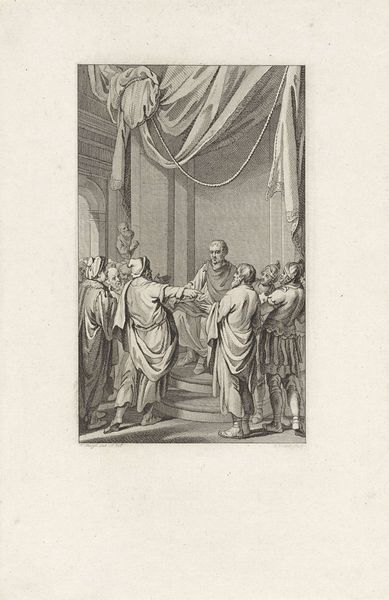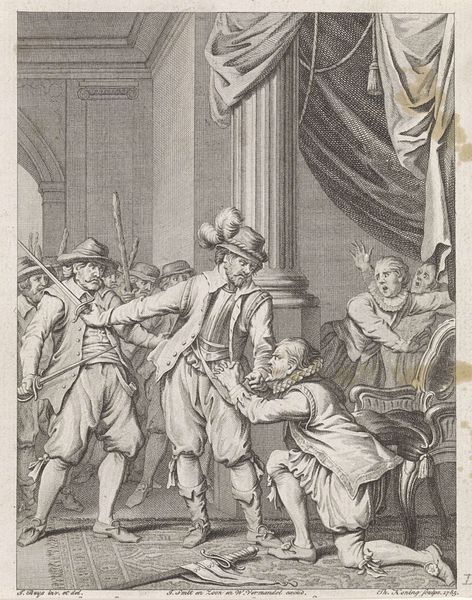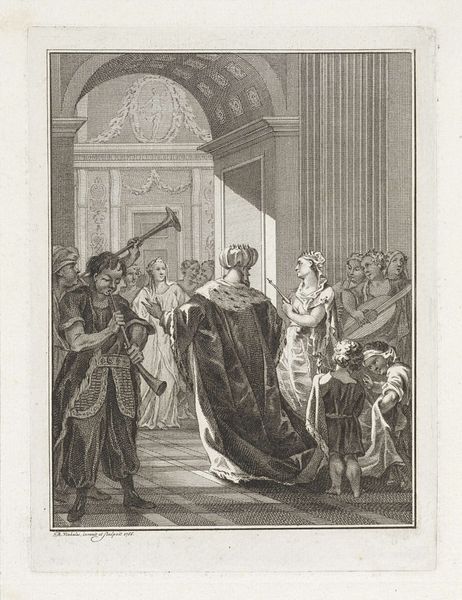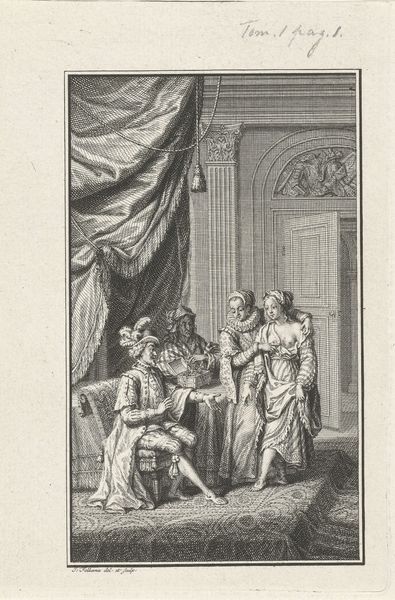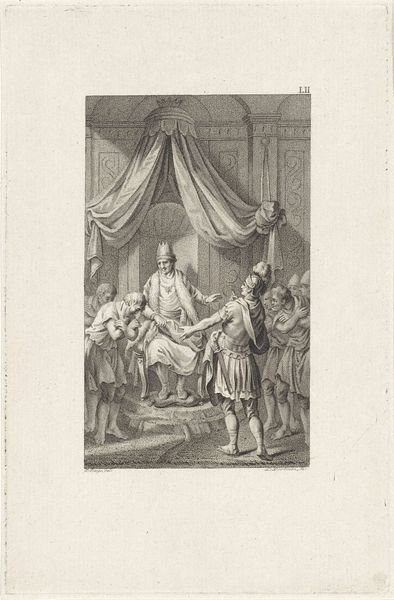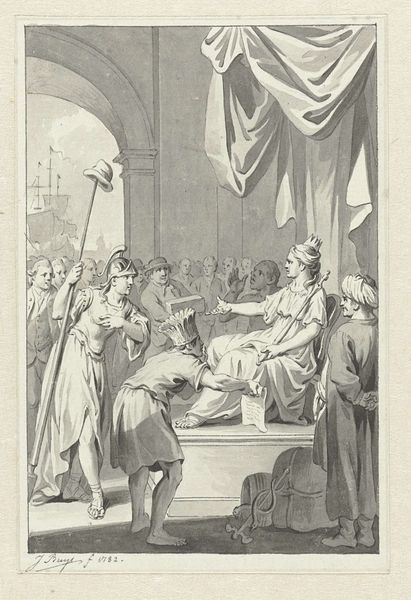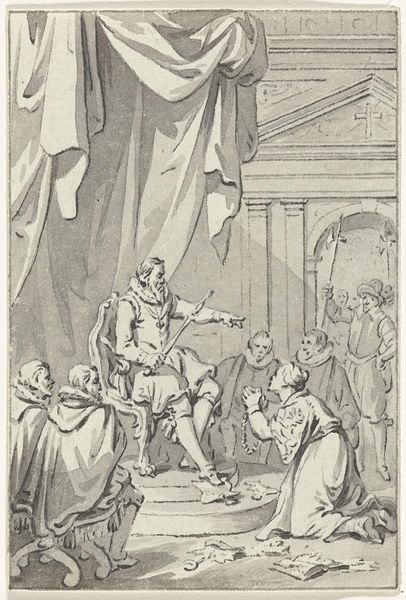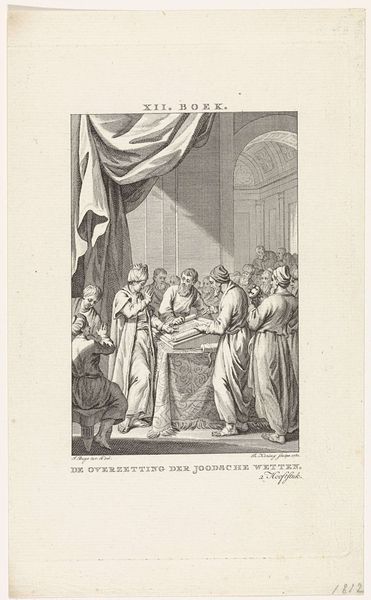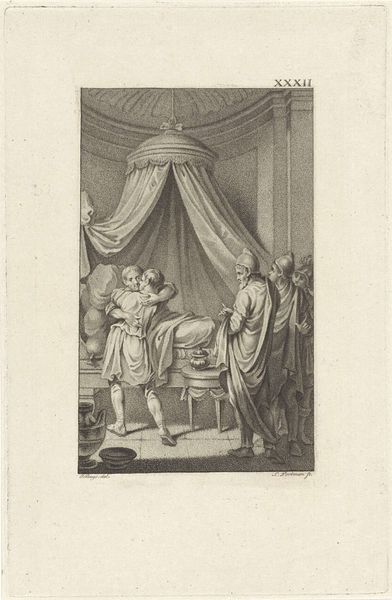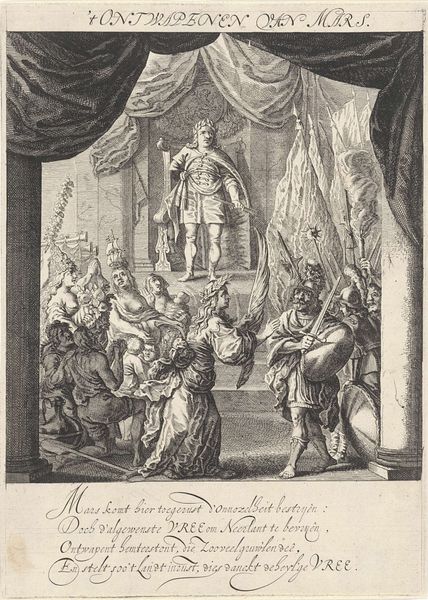
Dimensions: height 275 mm, width 220 mm
Copyright: Rijks Museum: Open Domain
Curator: Look at this etching by Theodoor Koning, titled "Alva eist de Tiende Penning op, 1569", dating from 1779, which is in our collection at the Rijksmuseum. The scene it depicts is quite intense. What are your initial impressions? Editor: It has a stark quality to it. The fine lines, clearly achieved through the printmaking process, lend a kind of dramatic formality. The figures seem captured at a moment of high tension. Curator: The linear structure and the monochromatic palette certainly contribute to the overall impact. Koning really uses the visual language of Baroque to represent a pivotal historical event, specifically Alva demanding the tenth penny. See the hierarchy established through composition: Alva is centrally placed, elevated on his throne, isn’t he? Editor: He’s quite removed from the common man. One really considers what it would mean to create so many almost identical images. Each individual print would then demand payment from those who acquire them, as the image travels, so too does Alva's demand. What implications did this image production have on society? Curator: Good question. From a formal point of view, though, it is interesting how the engraving is used to define the differences in texture, say, between the rich fabric of Alva’s clothing and the sterner garments of those opposing him. Also, the interior is richly decorated with high arches that reflect in some ways Alva’s powerful standing. The use of light and shadow gives considerable depth, doesn’t it? Editor: True, but consider also the role of skilled artisans needed for this type of print. It is labor intensive work requiring real talent, their lives and realities are quite literally invested within each print that they manufacture, giving each of these a clear index of the time and dedication invested in this historical moment. Curator: Precisely. Ultimately the network of lines, in a technical sense, brings order to a potentially chaotic moment. The stark contrast reminds the viewer to seek more than merely an historical recollection in the work itself. Editor: For me, the etching highlights not just the power dynamics depicted but also the often invisible labor involved in the dissemination of that image. This offers another interpretation of its enduring relevance.
Comments
No comments
Be the first to comment and join the conversation on the ultimate creative platform.
